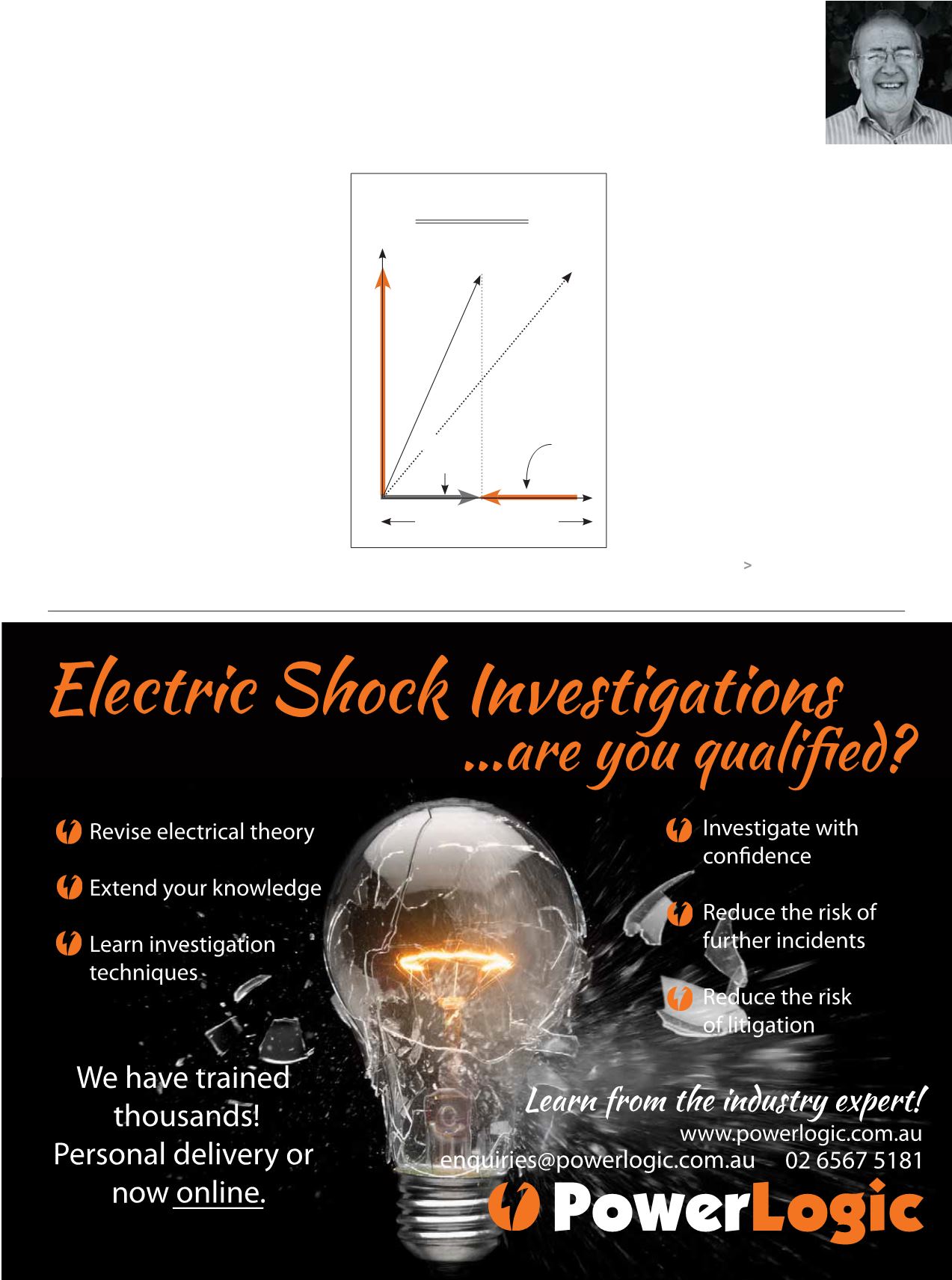

www. e l e c t r i c a l c o nn e c t i o n . c om . a u
2 9
with
Phil Kreveld
is one way of slowing the creep of
connection problems.
The power factor issue is best explained
by a simplified diagram (Figure 1). As more
solar power is fed back into the network,
the proportion of reactive power to
net kilowatts becomes larger – in other
words the power factor worsens. Network
calculations are complex and outside the
scope of this article, but in general, poor
power factor worsens voltage regulation.
The situation is exacerbated in soft
networks and may require special
consideration in single-wire earth return
(SWER) rural distribution. In stiff low-
impedance networks, power factor effects
are less noticeable.
Price pressure on domestic solar
installations has made them increasingly
affordable but not necessarily more
sophisticated. They answer to Australian
Standards requirements for their basic
performance and safety aspects.
As penetration increases, more features
will be necessary in order to connect to the
grid. An obvious one is battery storage.
Lithium-ion battery storage is still
expensive, but longevity and reliability are
steadily improving. The control algorithms
have been developed for ‘peak shaving’,
whereby excess energy on sunny days is
diverted to a battery system.
Power factor is basically controllable via
inverters, although it may not be not
immediately obvious. There is also confusing
information regarding the type of inverter
to be used for this purpose – current based
or voltage based.
Figure 1.
watts
PF =
√
reactive VA
2
+Watts
2
PF worsens because of watts inflow
Reactive VA
Watt
inflow
from
solar
Total VA
Total VA
Gross Watts consumption
Resultant
Watts
from grid
















